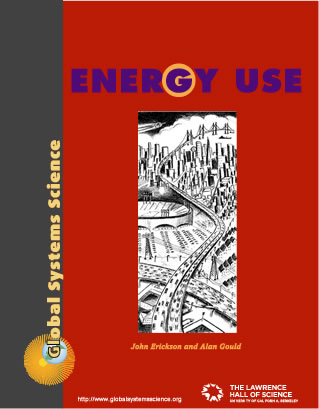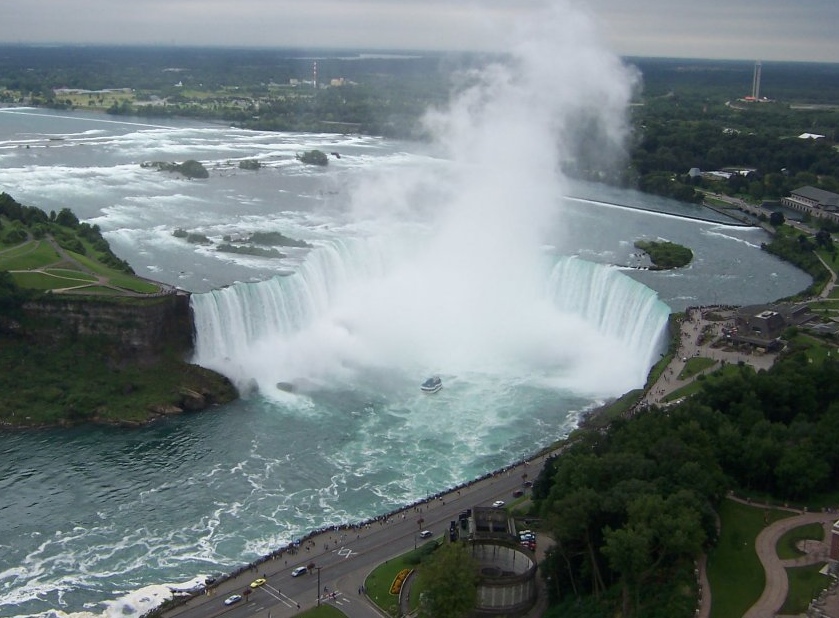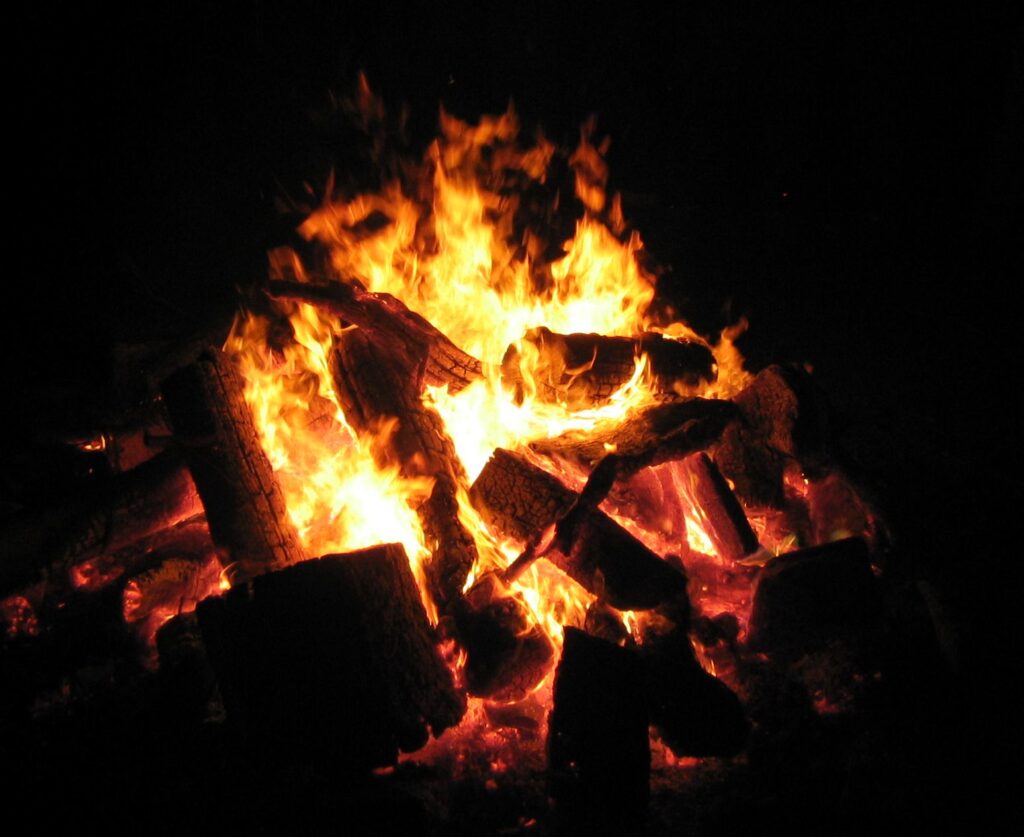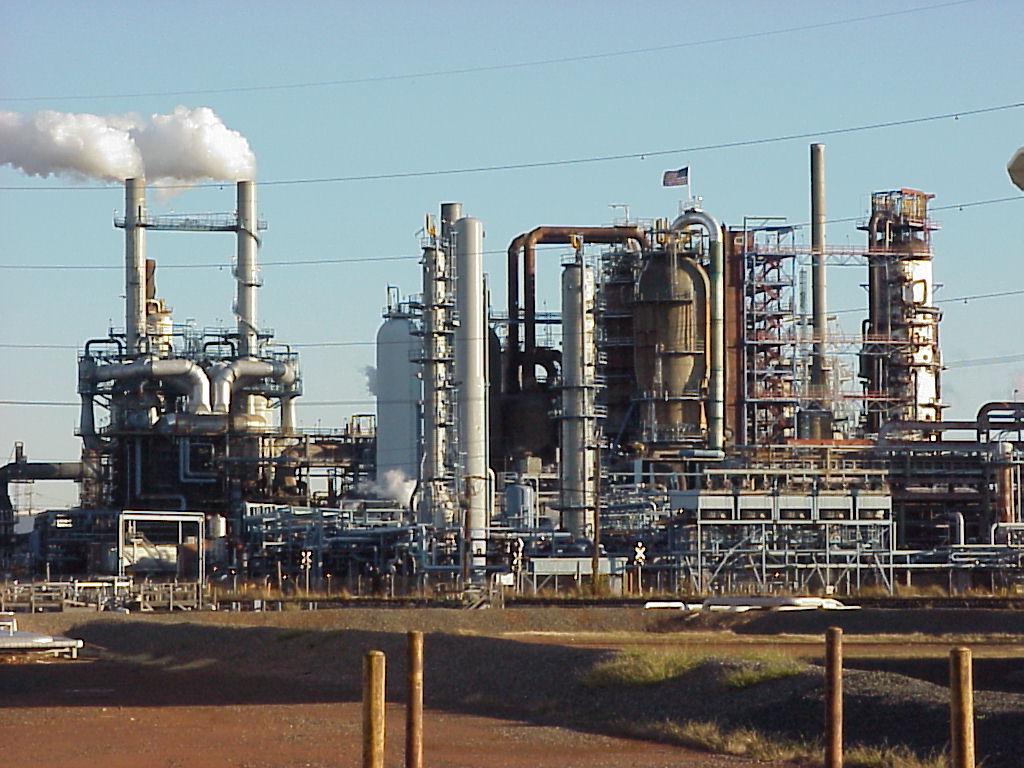EU1. How People Use Energy

Chapter 1
Without energy, nothing happens. With energy, things start happening. An intricate web of energy connects everything. The sound of rain on the leaves, the sound of a waterfall, and the sound of a rock concert are all related. Here’s how . . .
The Sun shines on oceans, rivers, lakes, and sunbathers wet from a swim. Water, absorbing the Sun’s energy, becomes vapor, and is carried by the wind. It returns to Earth as rain or snow. Some of it falls in sections of North America and drains through rivers and streams into the Great Lakes. Each minute 379,000 tons of this water tumbles over Niagara Falls, dropping more than 160 feet, accelerating by the force of gravity to nearly 70 mph.

The energy of this tumbling mass is transformed to heat and tremendous noise as the water crashes below. Tunnels upstream from the falls divert some of the water through powerful water turbines which drive some of the largest electrical generators in the world. Electricity flows through wires to supply the energy needs of millions of people, including those enjoying the sounds from a band’s amplifiers at a rock concert.
All living things need energy for growth, reproduction, survival, and comfort. In channeling energy, each species changes its environment. Changes can happen quickly, as when a beaver’s dam turns a woodland valley into a pond. Changes can be slower and more far-reaching, as when microbes on the shores of ancient oceans transformed our planet’s atmosphere from suffocating gases into the oxygen-rich air that supports life today. Humans have the ability to rapidly and profoundly change the environment through their use of energy.
Our ways of channeling energy have important side effects. People who wash their clothes by the river bank and dry them in the Sun affect the environment differently from those who use electric washers and dryers. Thousands of morning commuters in cars affect the environment differently from people who go on foot.
The standard of living of industrialized nations is built on a use of energy many times higher than that of the non-industrialized world, and many times higher than at any other time in history. Side effects of this energy use include increases in air and water pollution, with associated health problems. Also, our current energy use produces large quantities of carbon dioxide which may bring about planet-wide climate changes from an increased greenhouse effect and global warming.
I. Energy Use Past and Present
Since the beginning of the Industrial Revolution more than 150 years ago, the ways people use energy have changed, and the pace of change has increased. We can easily divide the history of energy sources into three eras.

Wood Era. Before 1850, wood was the dominant energy source. Trees were plentiful and cutting them provided fuel and cleared the land for farming and development. Over the years, as more land was cleared, wood had to be transported farther, so it became expensive. Today, many people prefer not to use wood for fuel because it is costly and wood smoke affects air quality more than other fuels.

Coal Era. In the 19th century, as the forests disappeared, wood was used less and less because a cheaper fuel became available—coal. Coal has several advantages over wood. A trainload of coal provides a lot more energy than a train load of wood. New manufacturing processes and the invention of steam-powered trains demanded high temperatures that coal could easily provide. Mining technology made large quantities of coal available at lower prices.

Oil and Gas Era. Recently, oil and gas have replaced coal as the dominant energy source.
In the past few decades other energy sources, including nuclear and hydroelectric power have been added to the energy source pie. Hydroelectric power is the harnessing of the energy of rivers, such as at Niagara Falls. Nuclear power harnesses the energy stored within atoms. Nuclear power, aside from nuclear bombs, is used to generate electricity.


EU1.1. Investigation:
Recent History of Energy Use
“My grandfather used horses to plow his fields. The hay and oats that powered those horses were the source of energy. Now the same fields are plowed with tractors and we get our energy from gasoline.”
“People did not just hop on an airplane back then. If it was more than a day’s drive or more than overnight on a train, we just didn’t go.”
The memories of living people can show how rapidly energy use has changed in recent years. Even people 10 years older than you can probably tell you about new developments in energy use that have happened in their lifetimes.
Find someone to interview. It could be an older relative such as a parent, grandparent, aunt, or uncle. It could be someone unrelated to you. Just be sure it is someone you can trust not to tell you a tall tale. “When I was a lad we used to walk 20 miles to school in blinding snowstorms. Air conditioners? Why in summer we fried eggs on the kitchen table tops.”
Topics to discuss during the interview that may help you find out about changing uses of energy are:
- Cooking
- Communication
- Transportation
- Heating
- Entertainment
- Business
- Vacations
II. Side Effects of Our Energy Use
Today, the average person uses far more energy than that person’s grandparents used—and there are more people alive today than ever before. Since we rely mostly on oil, coal, and gas, our energy use generates serious problems, including the following.
• Pollution from burning fuel causes health problems.
• Carbon dioxide from burning fuel contributes to global warming which is likely to affect the world’s climate system.
• The cost of fuel rises as it becomes scarcer, which can strain standards of living around the world as more money has to be devoted to pay for energy use.
Within your lifetime, the ways people use energy will have to change again, and you will help to make those choices.
We can help to limit our effects on the environment by learning how to use energy wisely. However, wisdom does not come from memorizing a few simple rules. There will be many choices related to energy use in the future—including some that we cannot even imagine today. In order to acquire the wisdom to make the right choices, it will be important to learn about how people use energy now. That’s what this book is all about.
Humans and Energy
(video segment from Earth: The Operator’s Manual)
See Staying Current for this chapter.


